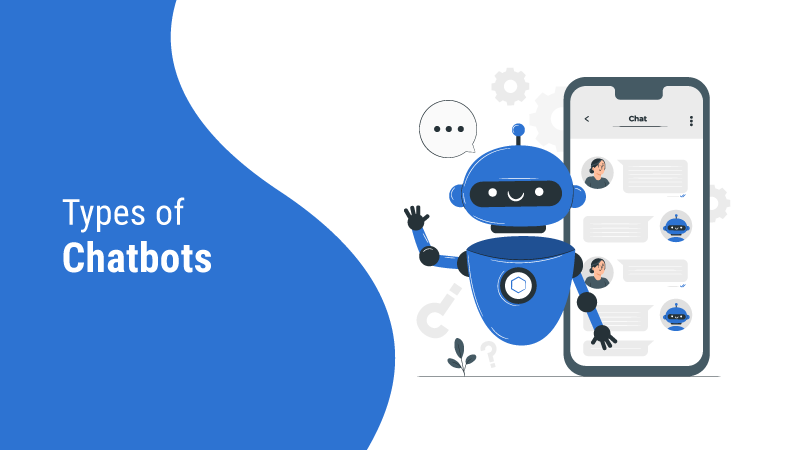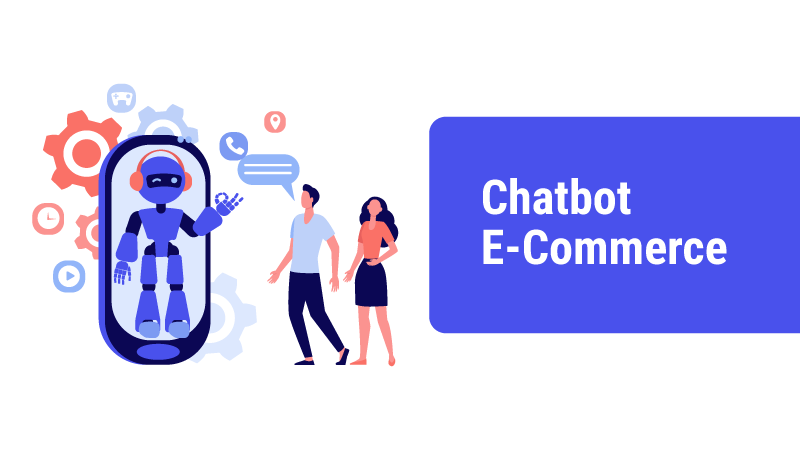Different Types of Chatbots – How to Choose the Right One

Introduction
The growth of artificial intelligence has brought with it many new ideas of development. However, the rise of a chatbot cannot be denied. The integration of Artificial intelligence (AI) in chatbots is a great success and has many advantages. You may have noticed the presence of different types of chatbots in the market but are never the same in terms of functionality, interface, purpose, and more. It is true that the ultimate aim of every chatbot will be the same, that is – perform the same way as humans would do but without any rest. The difference lies in where it is used and what specific function it performs. For example, the chatbot you use on an eCommerce website would be totally different from the one you use for Banking. Just as we differ in our personalities and abilities, the same goes for the looks and functions of chatbots.
Types of Chatbots
Since we know that chatbots function differently according to different business needs, we should also know the different types of chatbots used in various industries. Here are some of them:
Menu/Button-based chatbot
These are the standard type of chatbots currently available in the market. These chatbots are mostly dignified decision tree hierarchies given in the form of buttons to the users. With this chatbot, the user has to make a number of choices in order to find out the answers to these chatbots like the automated phone menu which we use every day. These chatbots are enough to answer frequently asked questions, which make up almost 80% of assisting/support questions; they are very rare in more advanced situations, especially where there is too much knowledge or too many variables that determine how users will get to certain answers with confidence. One thing to be noted is that these menu/button-based chatbots are the slowest when it comes to giving the expected value to the user.
Linguistic/ Rule-based chatbot
A linguistic chatbot can be the best choice for your business if you can foresee the types of queries your users may ask. Linguistic or rule-based chatbots use ‘if or then’ conditions to generate conversational streams. Defining the language requirements of your chatbot is the first thing to do, and then you can generate conditions to interpret and analyze words, their synonyms, and word order. If the conditions designed in your chatbot match the user’s query, then your bot can provide prompt and appropriate assistance to the customers in a minimum time.
Anyhow, it is your responsibility to make sure that the arrangement and presentation of each query by the customer are defined in a way that is comprehendible for the chatbot. This is the reason behind the slow but incredible development of the linguistic model.
Keyword recognition-based chatbots
Keyword-based chatbots are capable of listening to whatever the user types and giving the response immediately. These chatbots use custom language and Natural Language Processing (NLP)- an application of artificial intelligence – to decide how users should be given responses appropriately. These types of chatbots fail to meet the standard when you have to answer many similar questions. The NLP chatbots start to slip when they have to respond to many similar queries and when there are keyword repetitions in similar questions.
Hybrid chatbots based on keyword recognition and menu/button are very popular in the market. These chatbots give customers the opportunity to directly ask their queries or use the chatbot’s menu buttons in case the keyword recognition functionality gives bad results or if the customer needs assistance to find a solution to their query.
Hybrid model
The advancements offered by the AI-based chatbots are adored by businesses but most of them cannot support these chatbots as they lack huge amounts of data and skillsets. Therefore, they chose the hybrid model, which delivers the functionalities of both worlds— the sophistication of AI-bots and the intelligibility of rule-based chatbots.
Machine Learning chatbots
You can easily identify how strong conversation context can be when integrated with AI and ML. They are also called conversational chatbots, which use Artificial Intelligence as well as Machine Learning (ML). These chatbots store and learn customer behavior to deliver enhanced services in the future. They are also smart enough to improve their performance without any external interventions. It gives customers the option to respond simply to questions the chatbot has already prepared based on the previous actions made by the customer. Thus, improving the customer experience to a greater level.
Voice bots
Businesses are now adopting voice-based chatbots to make conversational interfaces more local. Voice bots are being used widely over the past few years especially with virtual assistants like Apple’s Siri and Amazon’s Alexa. The convenience and ease of use offered by voice-based chatbots cannot be replaced with any other technology. A voice bot delivers a tension-free experience directly to the customers and as you know speaking is much easier than typing.
How to choose the right one?
Before you decide to choose a chatbot for your business, think from the customer’s perspective, the service they value, and the service they receive. Does the context of the conversation significantly affect this value? If it doesn’t, the time and resources are not worth installing it.
The target user base and the preferred user experience are two other things to be considered. Instead of asking questions directly to chatbots, there are users who prefer chatbots to help them with visual menu buttons. Users have every reason to check your chatbot thoroughly before you implement it completely.
When it comes to choosing the right chatbot, choose the one that serves the value the customers expect. It may need some enterprise-level AI skills in certain situations, but otherwise, menu buttons are the best solution.
Wrap Up
There are many types of chatbots available in many variants for different businesses and enterprises. When businesses choose strategies for automation while saving resources, time, and effort, there will be an automatic hike in revenue and improved brand recognition. Once the chatbots take up the responsibility for time-consuming and repetitive tasks, they establish smoother connections with the users, add value, and provide a great customer experience. The results of such kind of automation are not limited to empowering the marketing experience but also delivering greater satisfaction on both sides.
Get Started with our AI ServicesBlogs by Category
AppForms Artificial Intelligence Blockchain Call Centers Chatbots Cloud Computing Data Management Design Digital Marketing Digital Transformation Enterprise Applications FinTech Insights LowCode Development Microsoft Mobile Apps News Office 365 Robotic Process Automation Security SharePoint Software Development Web ApplicationHow Chatbot Benefits E-Commerce

2024-05-23 16:40:42